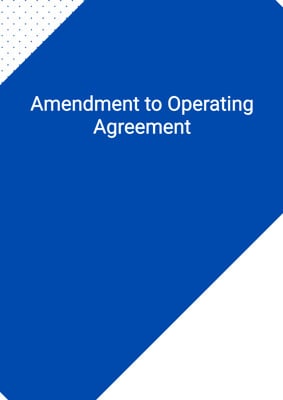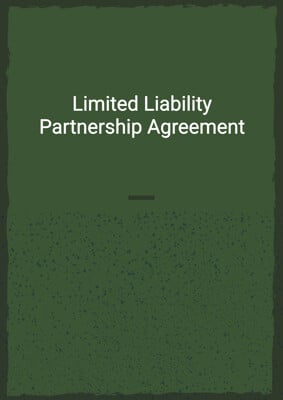How to Tailor the Document for Your Need?
01
Create Document
Fill in the details of the parties. You can click the "Fill with Member’s Information" button to complete it with information saved to your account.
02
Fill Information
Please fill in any additional information by following the step-by-step guide on the left hand side of the preview document and click the "Next" button.
03
Get Document
When you are done, click the "Get Document" button and you can download the document in Word or PDF format.
04
Review Document
The document should be signed by the authorised signatory (or directors of a company) and witnessed to complete the formality.
Document Preview
Document Description
The Partnership Deed is a legal document that establishes a partnership between four parties (referred to as p1, p2, p3, and p4) for the purpose of conducting a business. The document begins with an interpretation section, defining key terms used throughout the deed. It then outlines the commencement of the deed and the business of the partnership, which is to be conducted in the best interests of the partnership on sound commercial profit-making principles. The name of the partnership is specified as 'name' or any other name agreed upon by the partners.
The deed also covers the capital contributions of each partner, the further finance required, and the allocation of profits and losses. It establishes the partnership board, which is responsible for the overall supervision of the business and is composed of directors appointed by each partner. The partnership board meets quarterly and makes decisions by simple majority, except for certain reserved matters that require unanimity.
The document also addresses executive management, partnership property, undertakings by partners, expenses, accounts, budgets, and information. It includes provisions for indemnities, default, assignments, confidentiality, announcements, termination, waivers and amendments, notices, settlement of disputes, governing law, counterparts, and no rights for third parties.
The Partnership Deed is a comprehensive legal agreement that governs the establishment, operation, and termination of the partnership. It ensures that the rights, obligations, and responsibilities of each partner are clearly defined and provides a framework for the successful management of the partnership and its business.
How to use this document?
To use the Partnership Deed effectively, follow these steps:
1. Familiarize yourself with the entire document to understand its purpose and scope.
2. Ensure that all parties involved in the partnership have read and understood the deed.
3. Establish the partnership by entering the names and addresses of the parties involved in the agreement.
4. Define the business of the partnership and its objectives in accordance with the terms of the deed.
5. Determine the capital contributions of each partner and credit their respective capital accounts accordingly.
6. Discuss and agree upon any further finance required for the partnership and establish the terms of contribution.
7. Allocate profits and losses among the partners based on their percentage shares.
8. Appoint directors to the partnership board, ensuring representation from each partner.
9. Schedule regular partnership board meetings and establish the quorum and notice requirements.
10. Determine the reserved matters that require unanimity and the procedure for resolving deadlock situations.
11. Delegate day-to-day executive management responsibilities to the chief executive, who will be assisted by other executive managers.
12. Clarify the ownership of partnership property and the obligations of partners in relation to it.
13. Ensure compliance with the undertakings outlined in the deed, including restrictions on engaging in competing businesses.
14. Keep accurate records of expenses and seek reimbursement in accordance with approved arrangements.
15. Maintain proper accounting records and prepare audited accounts for each accounting period.
16. Develop draft budgets and business plans for each accounting period and seek approval from the partnership board.
17. Share relevant information and reports with partners as required.
18. Provide indemnities to protect partners from losses or liabilities arising from breaches of the deed.
19. Take appropriate action in the event of default by a partner, including serving a purchase notice if necessary.
20. Maintain confidentiality of commercial and technical information related to the partnership.
21. Seek approval from both partners before making any announcements related to the partnership.
22. Follow the agreed procedures for termination of the partnership, including the winding up of business and distribution of assets.
23. Ensure compliance with the governing law and jurisdiction specified in the deed.
By following these steps, you can effectively use the Partnership Deed to establish and manage a successful partnership.
Not the right document?
Don’t worry, we have thousands of documents for you to choose from:






















































